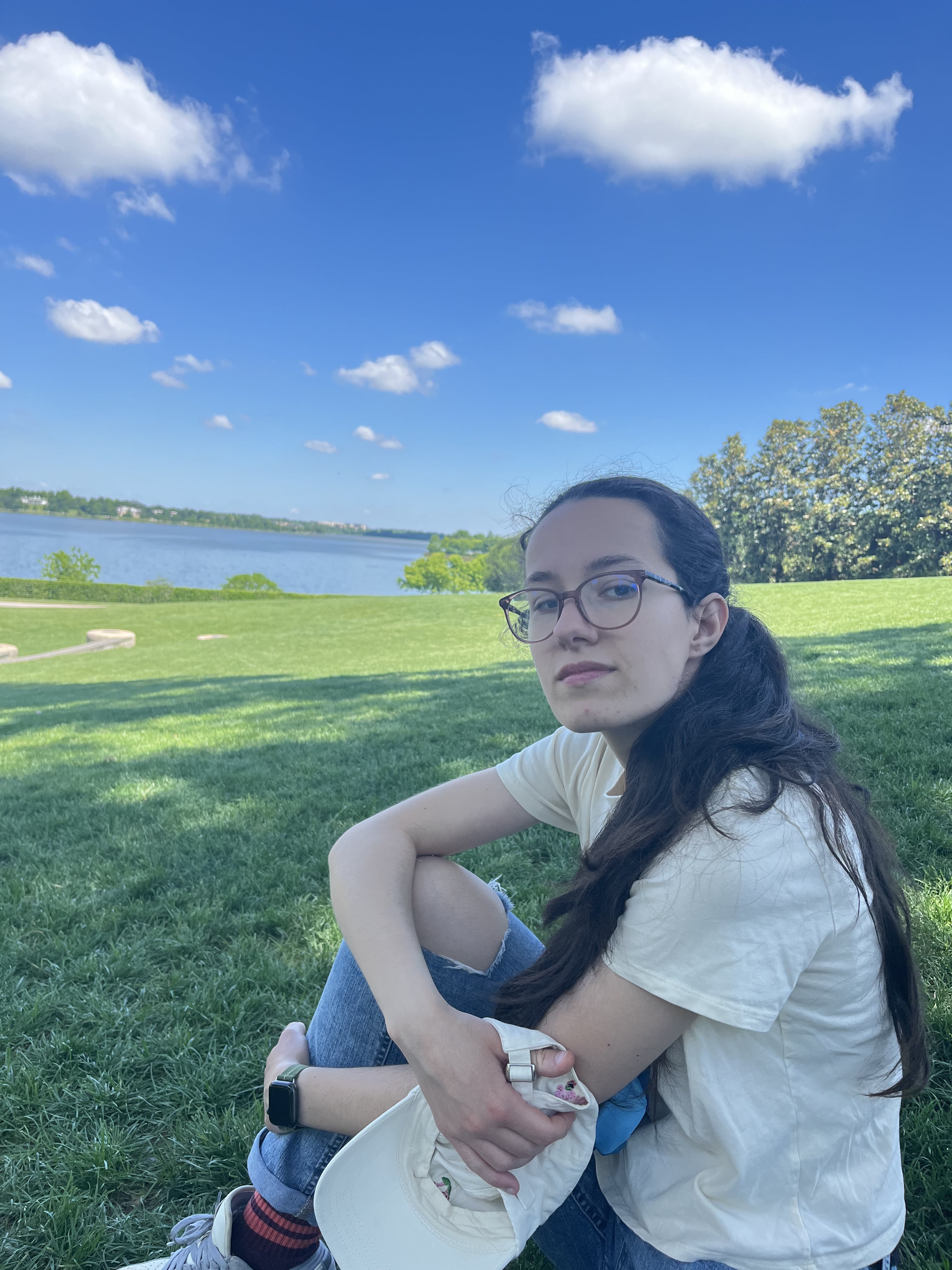Best Cities in the World for Foodies: Michelin Stars, Cuisines and Great Food
Published:
Exploring Michelin-starred restaurants around the world
Hello!
Which is the best world city for foodies?
As a fan of good food, I am always on the lookout for new places to try and new dishes to sample. To help with my exploration, I decided to look at the question “which is the best city for foodies” from a data science perspective. In this story, I am going to be analysing the Michelin guide. The Michelin guide is heralded as one of the most coveted guides for the best food around the world. There are only a few restaurants around the world which are part of it, and they can be awarded one, two or three stars, each signifying an exceptional level of quality and service. Using this guide, I wanted to understand which is the best city for food lovers. To answer this question, we’ll think about locations, density of food places, prices and varieties of cuisines. Let’s dive in!
Tools and Data
There is one main dataset with it information about all Michelin restaurants around the world (https://www.kaggle.com/datasets/ngshiheng/michelin-guide-restaurants-2021). Among others, it contains the following columns:
- Name
- Location
- MinPrice
- MaxPrice
- Currency
- Cuisine
- Award (number of stars given to it)
- Longitude and Latitude
Some other datasets that we’ll use are:
To carry out the analysis, I’ll be using Python and Jupyter Notebooks, along with Pandas, GeoPandas, Contextily, and Seaborn.
Exploring the Data
Cuisines
First, I am interested in seeing how the restaurants are distributed by cuisine type. Let’s look at the top 20 most common cuisines in the dataset:
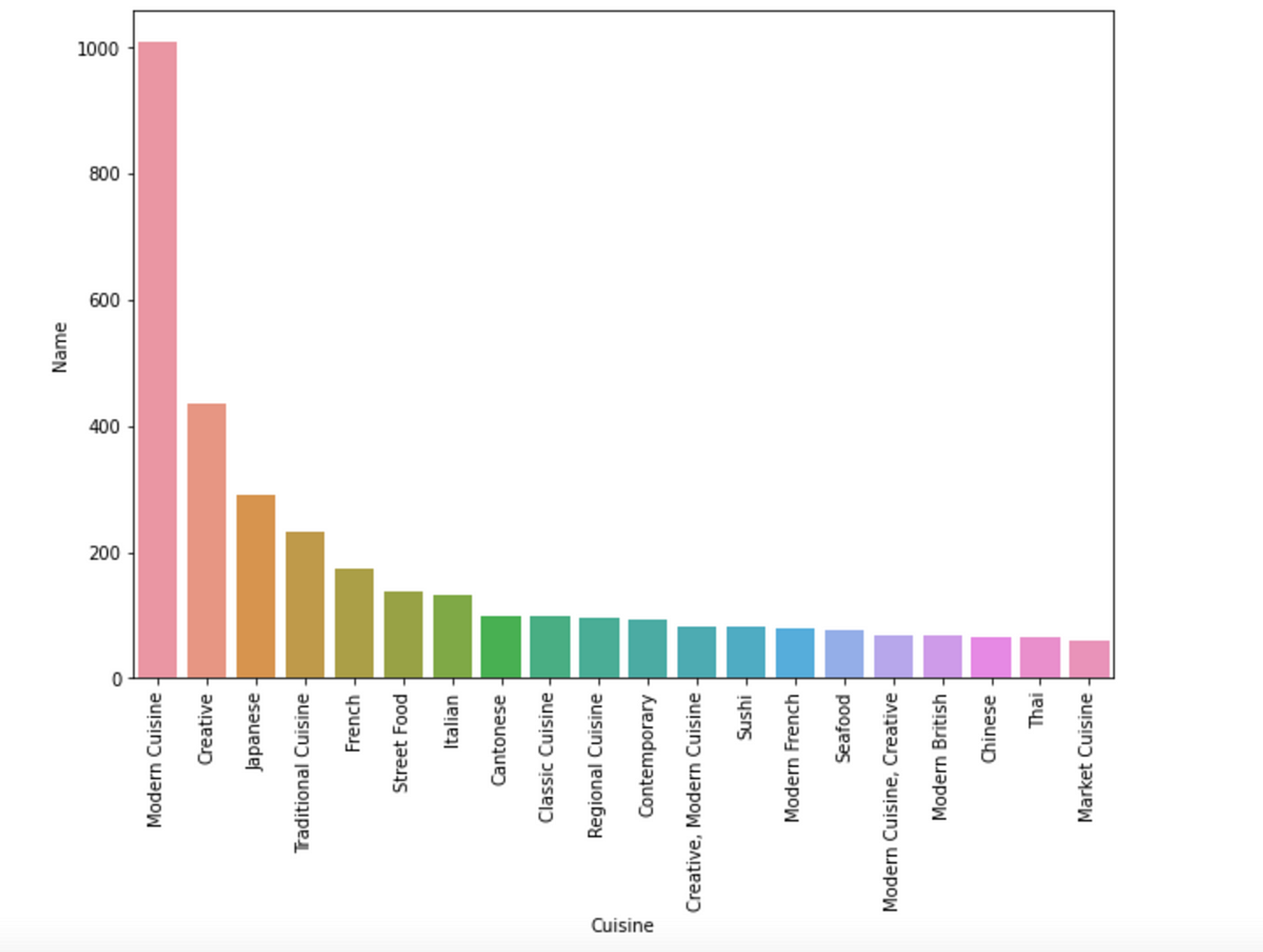
“Modern” cuisine and “Creative” cuisine are by far the most common types of restaurants. Modern cuisine often refers to an innovative style of cooking, often involving using traditional ingredients in novel ways.
Geographies
What does the map of all Michelin places around the world look like? Here it is:

Interestingly, most of the restaurants in the guide seem to be in Western Europe, with part of them in North America and South-East Asia. Does this pattern also hold when looking at individual cities? I.e. can we expect the cities with most Michelin starred restaurants to be in these regions as well? Let’s take a look at which cities have the most restaurants over all. Here are the results:
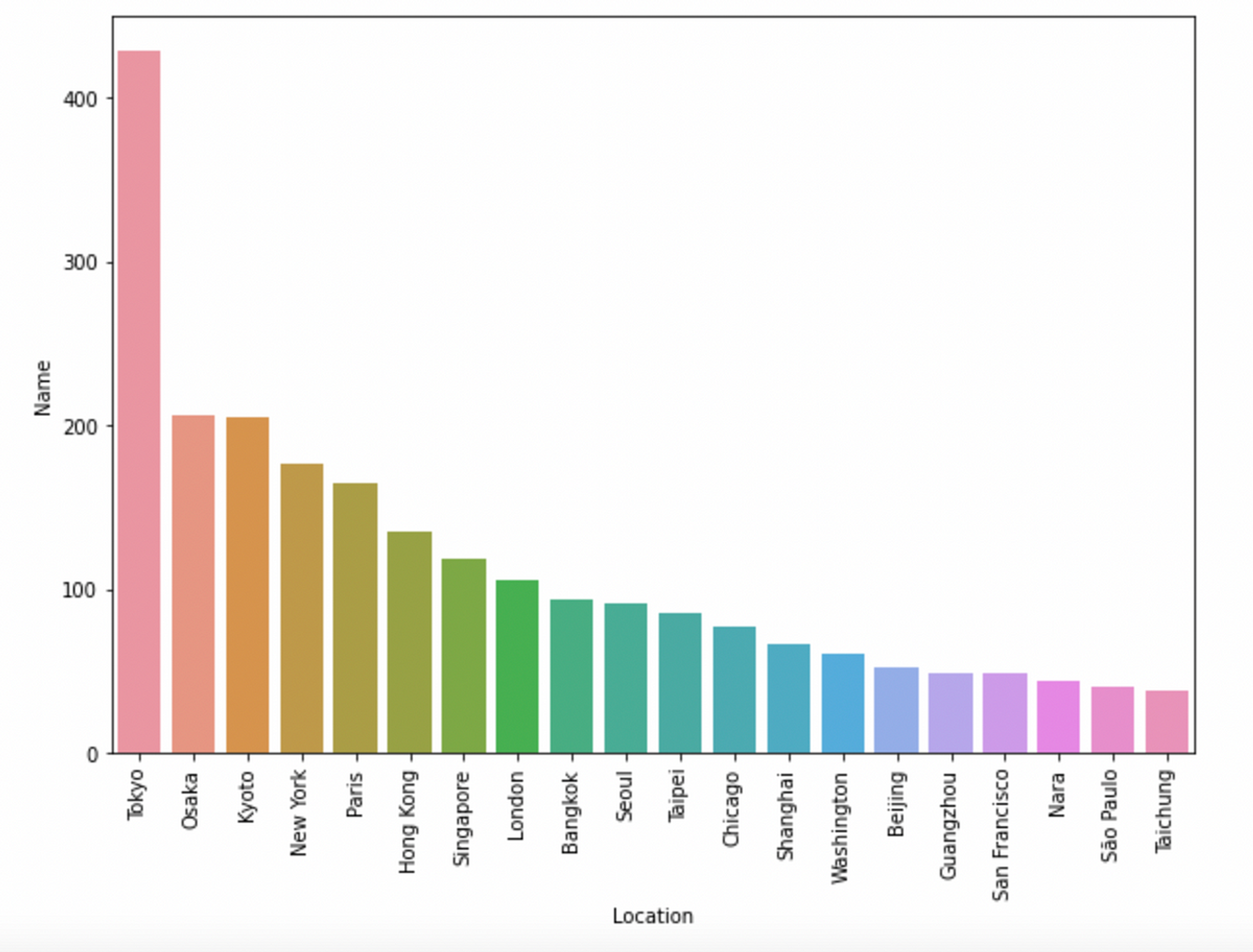
The top three cities are Tokyo, Osaka and Kyoto, followed by cities like New York and Paris. This makes sense: one would expect larger cities to have more restaurants and by extension more top-rated places. Interestingly, Tokyo has about twice as many food places as the 2nd ranked city, Osaka. In fact, along with Nara, a total of 4 cities from Japan make the top 20 list. In terms of population, the smallest city in this list is actually Nara, with almost 370,000 people living in it. The largest is Tokyo, which is the world’s most highly populated city (almost 14 million people).
To make more sense of these numbers, I am also interested in looking at the overall proportion of Michelin restaurants that are found in these cities. There are 6527 total Michelin restaurants around the world, and here are the percentage of those restaurants found in the top 20 cities:
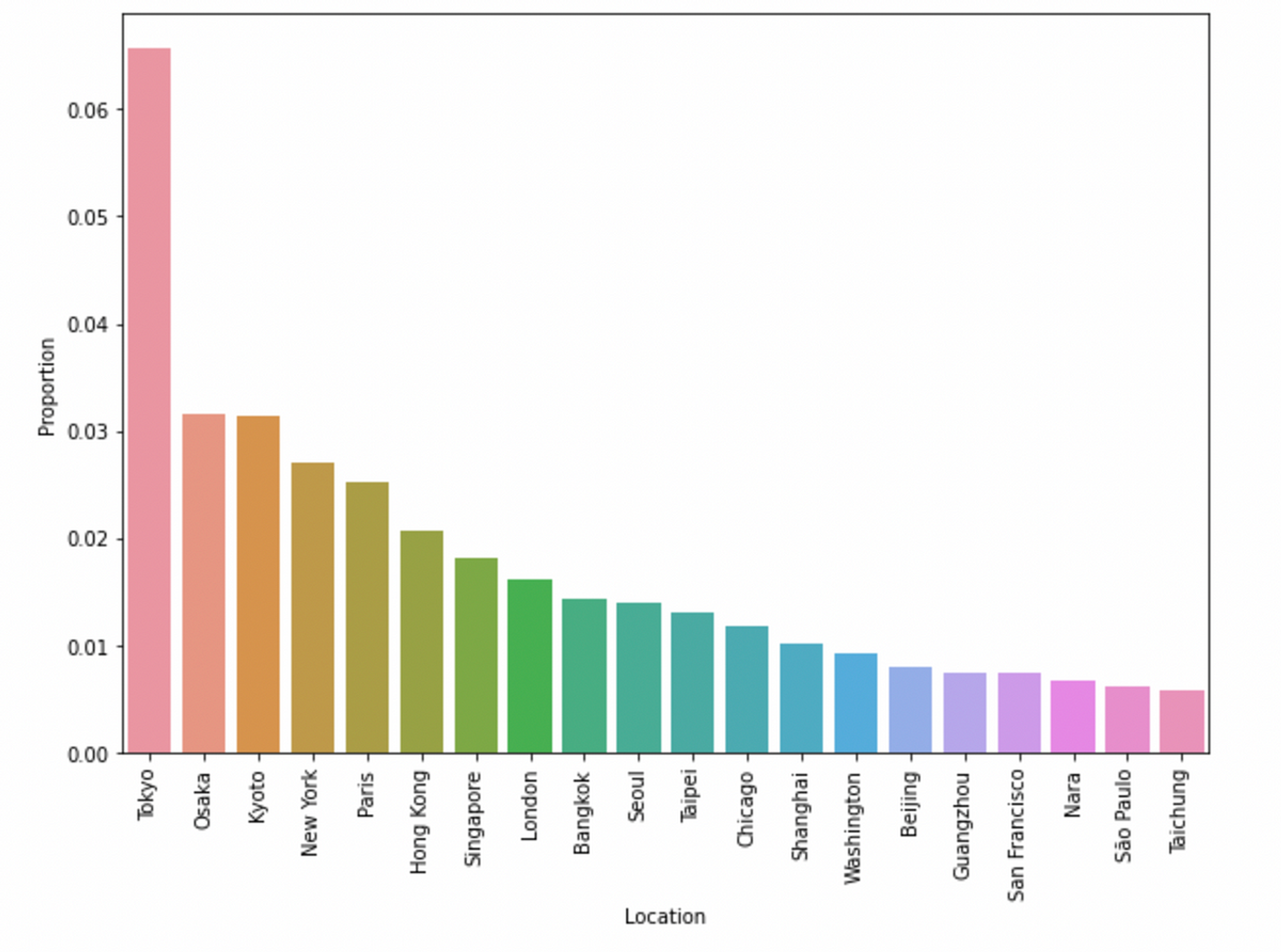
As you can see, about 6 percent of the world’s Michelin restaurants are found in Tokyo and 3 percent each in Osaka and Kyoto.
Tokyo
Since Tokyo is the city with the highest number of Michelin starred restaurants, let’s take a closer look at it. First, here is a map of all of the restaurants in the dataset colored by type of cuisine:
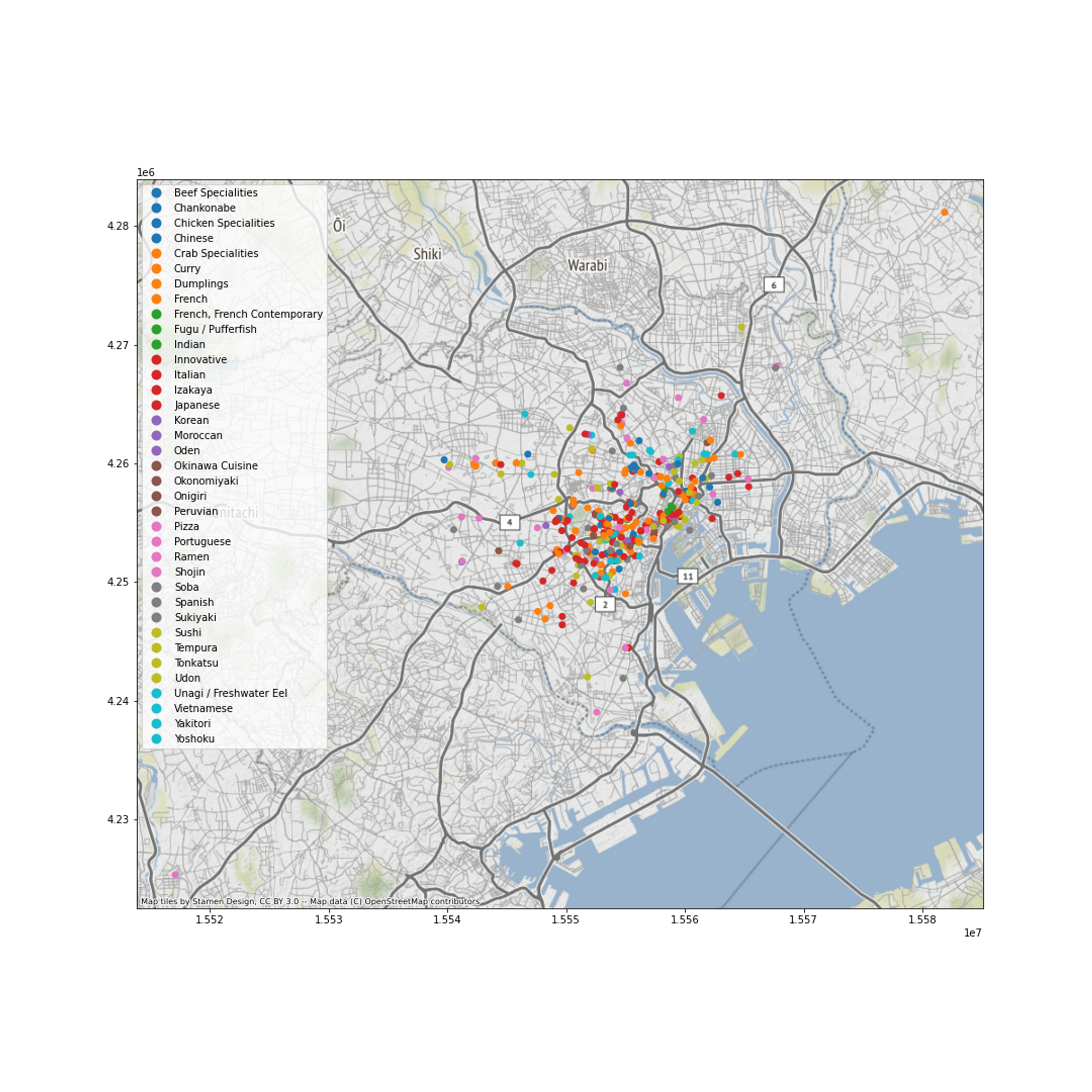
From the map, I can notice that there are some clusters of restaurants all approximately close to each-other. Also, while Tokyo’s metropolitan area is very large, virtually no restaurants are found further from the city center.
Price
Another consideration is that of affordability. The data already has minimum and maximum prices offered in a restaurant’s menu, but the information is in local currency. We need to convert it into a common currency using a Python library called “CurrencyConverter”. For this story, I’ll convert the maximum prices to USD to obtain a column called “MaxPriceUSD”:

Here is the restaurant with the lowest maximum price:
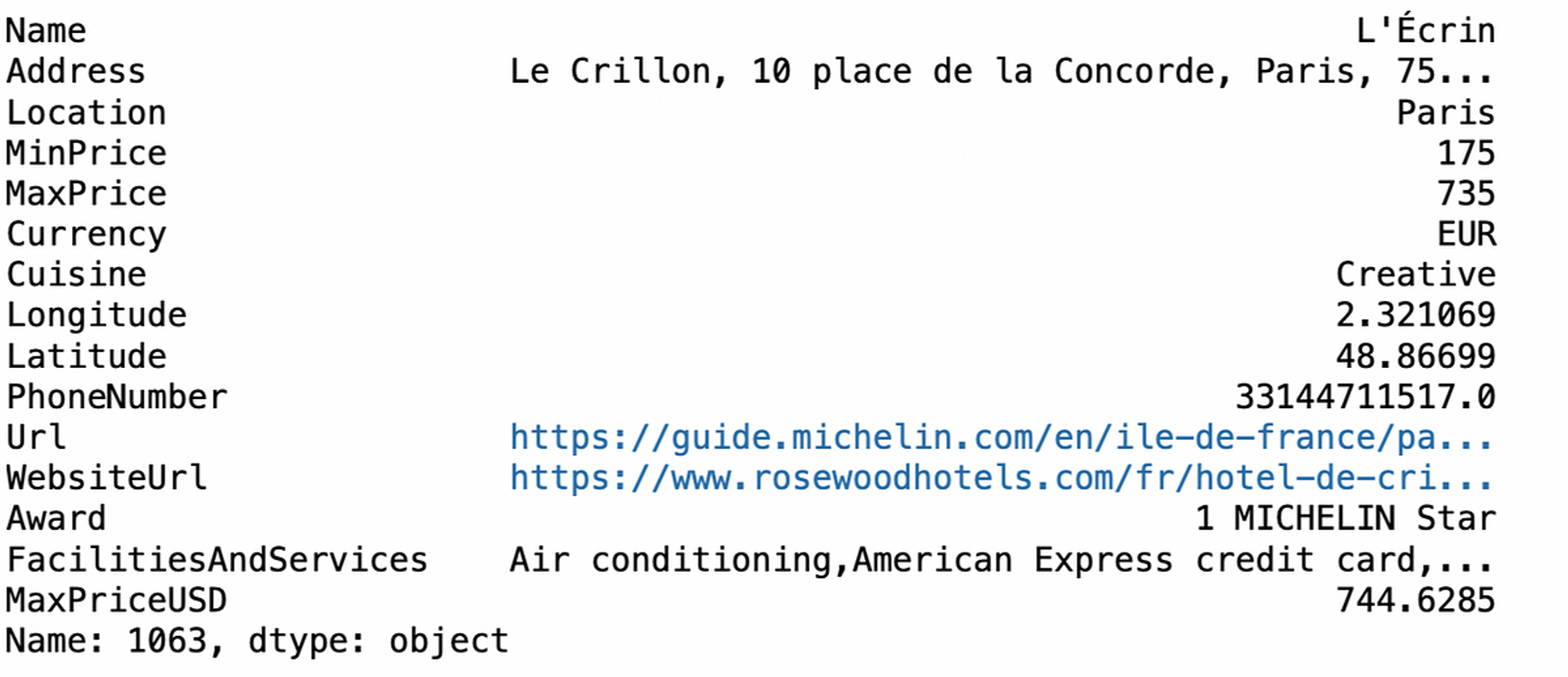
It turns out, at Lim Lao Ngow in Bangkok, you can get a Michelin starred meal for only about 1.36 dollars!
And which is the most expensive restaurant (highest maximum price)?
To my suprise, L’Ecrin has one Michelin star while having the highest price out of every other restaurant in the list. It’s cuisine is classified as “creative” and it is located in Paris.
Now, we can look at the cities with the lowest average maximum prices:
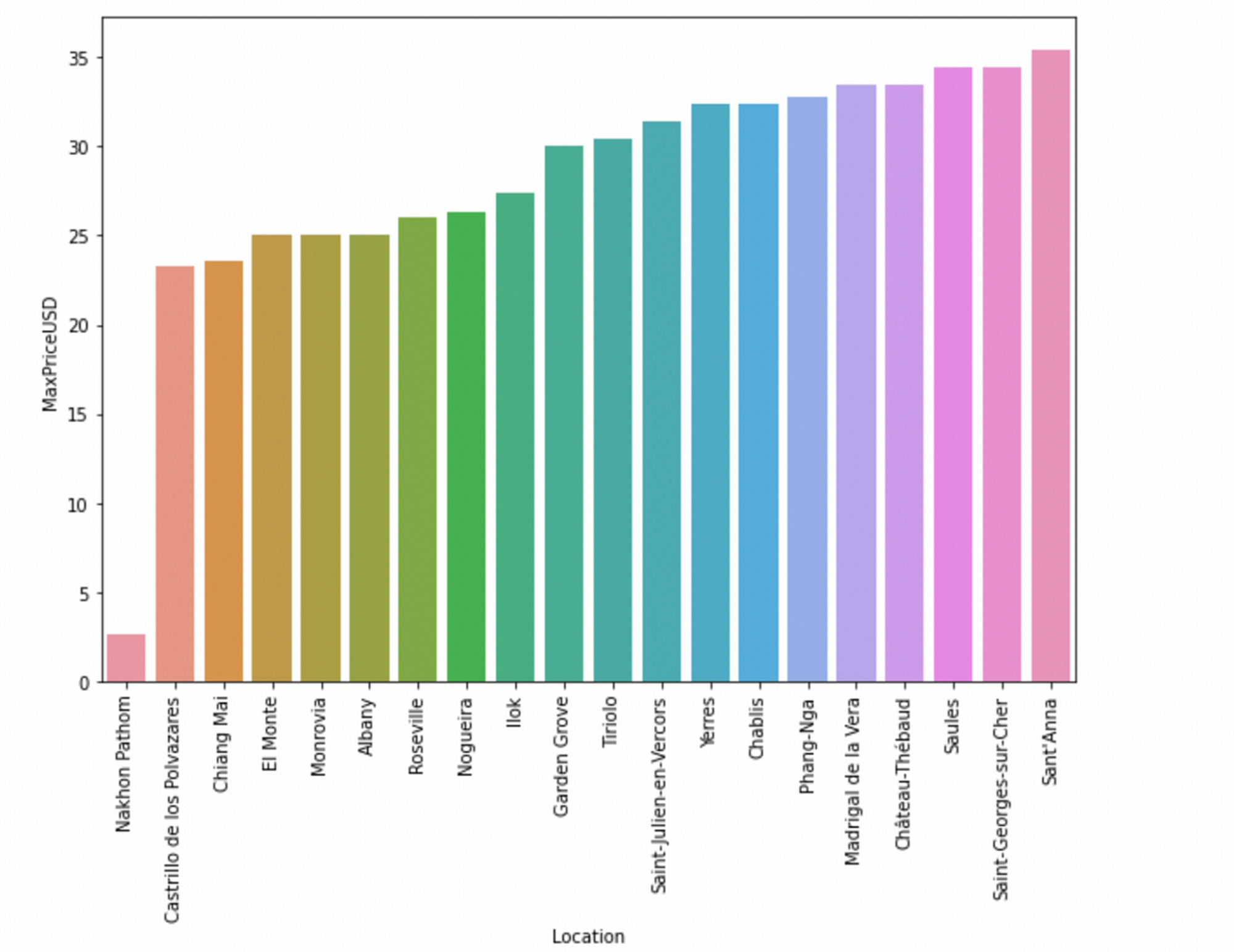
The city with the lowest maximum price is Nakhon Pathom, in Thailand. Chiang Mai, Phang-Nga are two other Thai cities featuring in the plot. Interestingly, it seems that cities in the plot above tend to be smaller in size, like Ilok only having about 6700 people.
To compare, here are the cities with the highest average maximum prices:

The most expensive city on average is the Belgian city of Kruishoutem, followed by Vejle in Denmark. These cities tend to also be small ones as well, and most of them are located in Western Europe.
Let’s also look at how different cuisines differ in their average maximum prices. Here are the 15 lowest average maximum priced cuisines:

Street food, followed by Kalguksu, a Korean noodle dish are the two cuisines with the lowest average maximum prices. In the plot, you can also notice that all cuisines are Asian with the exception of “Bakery, American”.
And how about the highest average maximum prices?
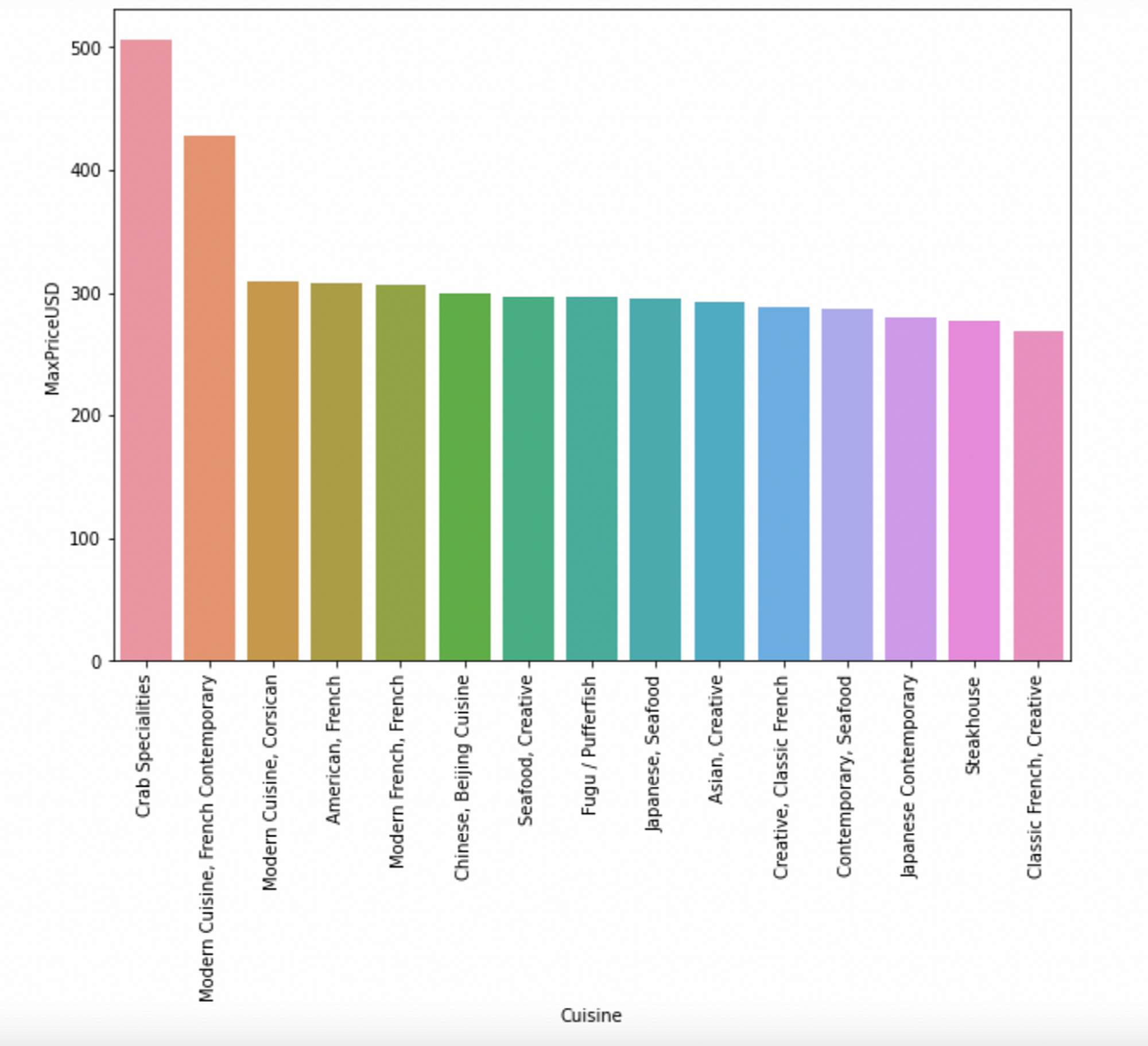
In this plot, “Crab specialities” is the most expensive cuisine on average. Another interesting cuisine is “Fugu/Pufferfish”, which is considered a delicacy in Japan and it is difficult to prepare, requiring special training because of its toxicity if prepared incorrectly.
To conclude, in this story we looked at different aspects of the restaurants featured in the Michelin food guide, and considered location, price and population in thinking about the best city for food. Thank you for reading!
